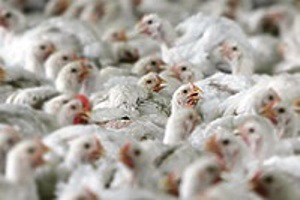The status of layer health in the US

Each year Eric Gingerich, Technical Services Specialist at Diamond V, makes a report to the US Animal Health Association about the status of layer health in the US. Here is a short summary of that report.
Overall health of the national table egg layer flock continues to be very good. There are no major clinical disease problems occurring. This is due to the several resources and practices available to the industry:
- Continued availability of high quality vaccines;
- Flock supervision from professional, well-trained flock service technicians;
- Readily available veterinary technical assistance from primary breeder, vaccine company, diagnostic laboratory, feed additive suppliers, and consulting veterinarians;
- High quality nutrition provided by professional nutritionists;
- Housing of a majority of layers in environmentally controlled facilities in cage without exposure to litter;
- Use of sound biosecurity practices;
- Continual surveillance for foreign animal diseases or potentially highly pathogenic agents such as Newcastle and avian influenza by our state and federal laboratory system.
A poll of the Association of Veterinarians in Egg Production (AVEP) was conducted within the last month. The members were asked to rate a list of common diseases of caged and cage-free pullets (22 conditions listed) and caged and cage-free layers (31 Diamond V 2 conditions listed) as to their prevalence in their area of service on a scale of 0 to 3 with 0 = not seen, 1 = seen but not common, 2 = commonly seen, and 3 = seen in a majority of flocks. The results can be found online.
Chick mortality problems are normally associated with small chicks, poor sanitation in the hatchery, or a lack of proper brooding management on the grow farm. As this problem continues high on the prevalence list, the emphasis on solving this issue is apparently not being addressed successfully. The rearing of flocks on litter and exposure to feces complicates coccidiosis in cage-free situations. Marek’s in cage-free flocks is also an issue due to the reduced ability to sanitise cage-free facilities between flocks compared to cage houses.
Cannibalism continues to be seen especially in high light-intensity situations, both caged and cage-free. In these cases, the 10-day or younger rule for beak trimming results in longer beaks than desired compared to a beak trim at 4 to 8 weeks and results in an increase in incidence and severity of cannibalism. As this is a major problem for cage-free flocks, genetics companies are placing more emphasis on reducing this trait. The increasing use of large colony cages may also increase the level of cannibalism.
Colibacillosis is a problem mainly of young flocks where mortality rates of 0.5 to 4% per week starting shortly after housing can occur. It is felt that this condition is most often secondary to upper respiratory challenges with Mg, Mycoplasma synoviae (Ms), ammonia, infectious bronchitis (IB), etc. It also may be a primary problem if water lines are contaminated with E. coli.
Calcium depletion is normally associated with low intake of calcium, phosphorus, and/or vitamin D3, especially early in production with low feed intakes. This condition will be an ongoing issue with increasingly higher egg production rates through improvements in management and genetics.
An external parasite, the Northern Fowl Mite, has risen to prominence in cage layers in past years’ surveys. The difficulty in treating this condition, in cages and in cagefree flocks, has likely led to this increase. Spray treatment of caged layers is difficult due to the configuration of equipment. Elemental sulfur in dust baths is being used very successfully in cage-free flocks. Feeding of elemental sulfur will aid in reducing numbers of mites on birds as well. Decontamination of pullet moving trucks and equipment may also be lacking especially if the equipment was used previously for mite-infested spent fowl movement.
The full report can be found online using this link.













